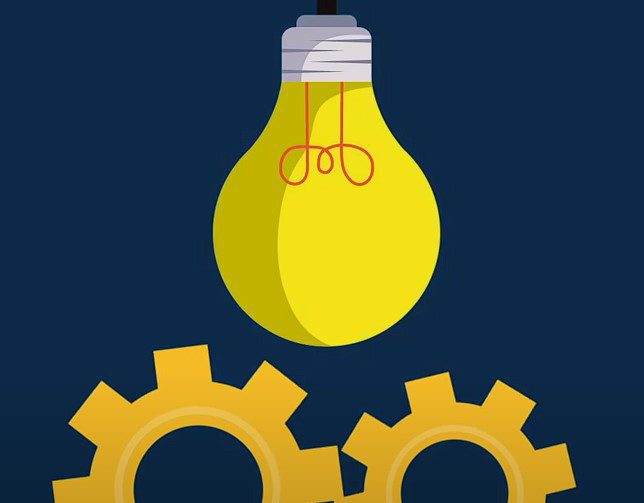Just the other day, you were exhilarated and jumping with joy for being enrolled in a teacher education program in a university or college of your dreams. And now, after a few years of burning the midnight oil trying to make your dream come true, you are a step closer to graduating college with a teaching degree.
But before that, you are required to complete your student teaching experience. You are excited but also feel nervous. You don’t know what the future holds or what the student teaching experience will be like.
However, deep down, you know that everything you’ve learnt in your teaching program prepared you for this very moment. It is time for you to step up, to stand up and be counted, and get a rare glimpse into the world of a teacher. But what is student teaching exactly?
This is what we endeavor to answer and we believe that by the end of this article, you will have learnt what is student teaching, is student teaching effective, what is student teaching experience and so on and so forth.
All the answers are here: Active Listening Skills.
What Is Student Teaching?
Student teaching is, in simple terms, a supervised teaching experience where pre-service teachers gain hands-on experience in classrooms under the guidance or mentorship of an experienced teacher.
In other words, student teaching experience provides you with an opportunity to gain valuable insights about the teaching field that will hopefully go a long way towards shaping how you will inspire your future students.
Student teaching provides aspiring teachers with a practical learning experience to implement what they have learnt on campus in a real classroom. With student teaching, pre-service teachers get the opportunity to apply the knowledge and skills they acquired in their teacher education program.

What Is Student Teaching Like?
If you are nearing the end of your teacher education program, you probably have wondered what student teaching is like. You are not alone, many pre-service teachers grapple with the same question. They are always wondering what the experience will be like and whether they will be up to the task. Well, while student teaching can be an intense and challenging experience, we must state that it can also be an incredibly rewarding experience.
What happens is that when pre-service teachers go for student teaching, they work closely with an experienced mentor teacher. The mentor teacher essentially helps pre-service teachers plan and deliver lessons, manage a classroom, and assess student learning.
Mentor teachers more or less hold the hand of pre-service teachers and guide them while allowing them to become a better version of themselves. In the beginning, pre-service teachers may simply observe the mentor teacher, assist the mentor teacher with classroom management, and work with small groups of students.
However, as time goes by and as their confidence improves, they begin to lead lessons and manage the classrooms independently under the guidance of the mentor teacher. Perhaps the most challenging aspect of student teaching is the fact that pre-service teachers have to strike the right balance between handling the demands of lesson planning, grading, and classroom management with their own coursework.
That said, student teaching provides pre-service teachers with valuable hands-on experience that will go a long way toward shaping their future as teachers.
Be the first to know about it: Student Debt.
Why Is Student Teaching Important?
There must be a reason why student teaching is mandatory in colleges and campuses all over the world, right? I mean, it is one thing to learn about teaching strategies and classroom management in theory and another altogether putting into practice what you’ve learned in a real classroom setting. Well, student teaching is important in the following ways.
Hands-On Experience
Student teaching enables pre-service teachers who are green from college with a life-changing opportunity to put to practice what they’ve learned in their teacher education program. They get a feel of what teaching real students is like and develop invaluable skills they need to become effective educators in the future.
Networking
Networking is all about building connections and student teaching provides pre-service teachers with a great opportunity to network with administrators, experienced teachers, and other education professionals. These connections built during student teaching might play a key role so far as finding future teaching employment opportunities is concerned.
Building Confidence
No doubt, student teaching allows pre-service teachers to build or develop confidence in their teaching abilities. They put to use what they’ve learned in their teacher education program in a real classroom with real students and real feedback. By the end of the student teaching experience, pre-service teachers will be more confident and ready to take on the challenges that come with teaching and managing a classroom.
Professional Development
Learning in theory on campus and putting what you’ve learned to practice in a real classroom are two different things. It opens up your eyes to what the real world is like and leads to professional development. Student teaching endeavors to help pre-service teachers to develop their teaching skills and gain hands-on experience in lesson planning, classroom management, and student assessment.
Feedback
Student teaching makes it possible for pre-service teachers to get regular feedback from their experienced mentors. They, therefore, have an opportunity to get to know what they are doing right, where they need to improve, and what they need to do to become effective educators in the future. This feedback is instrumental in molding pre-service teachers to become a better version of themselves and develop their teaching skills.

What Do You Call A Student Teacher?
A student teacher may also be referred to as a pre-service teacher or a practicum student and generally refers to a campus or college student who is completing their teacher education program and is gaining hands-on experience in a classroom under the guidance and mentorship of an experienced teacher. In essence, a student teacher works under the supervision of a mentor teacher. The duties of a student teacher include but are not limited to.
· Creating lesson plans
· Teaching classes
· Assigning coursework
· Grading assignments
· Interacting with students
Initially, a student teacher observes the mentor teacher and tries to get the hang of things. Gradually, they move into a more interactive teaching role as their confidence increases.
How Do You Become A Good Student Teacher?
As a student teacher, it is in your best interests to hijack the opportunity that the student teaching program has accorded you and learn as much as possible.
A good student teacher endeavors to strike a good rapport with their mentor teacher, school administrators, as well as develop close relationships with classroom students. You are there to learn, develop skills, and positively influence your classroom students.
As a student teacher, you must observe carefully what your experienced supervisor is doing, and implement the same when you start taking on a more interactive role. You should have great communication skills, be disciplined, and have the hunger to learn as much as possible from your more experienced educators.
All information about: Student Housing.
What Is Student Centered Teaching?
Student centered teaching, as the name suggests, is an approach to teaching and learning where the focus is on the student rather than the teacher. In other words, the teacher merely acts as a facilitator of learning and thereby provides students with opportunities to explore, collaborate with each other and discover knowledge on their own.
In essence, student-centered teaching is all about encouraging students to actively participate in the learning process, and encourage them to take responsibility for their own learning while emphasizing student engagement and active learning. Student-centered teaching recognizes the fact that students are diverse and possess unique abilities, interests, and needs. It, therefore, seeks to create a learning environment that supports and celebrates this diversity.
Student-centered teaching has a number of benefits such as.
· Increased student engagement.
· Improved critical thinking
· Improved problem-solving skills
· Increased motivation and retention
· Improved collaboration skills
Student-centered teaching employs a variety of instructional strategies such as.
· Hands-on activities
· Project-based learning
· Group work
· Inquiry-based learning
The bulk of learning is done by the students and teachers merely act as facilitators and guide students to achieve their full potential. The teacher assists students to set their learning goals, provide feedback on their academic work, and offers support as and when needed.
In a nutshell, by placing emphasis on the student rather than the teacher, student-centered teaching endeavors to create a learning environment that is inclusive, equitable, and values and respects each student’s unique abilities and experiences.

What Is The Difference Between Practicum And Student Teaching?
Granted, the terms “practicum” and “student teaching” are often used interchangeably. To some, the general belief is that they mean the same thing. Wrong! There are differences between the two.
A practicum is a supervised teaching experience and usually takes place during the early stages of a teacher education program. The duration of a practicum is relatively shorter than that of student teaching. A practicum lasts anywhere from a few weeks to a few months. It’s imperative to note that during a practicum, pre-service teachers observe their mentor teachers and generally work with smaller groups of students. With time, as their confidence increases and they gain hands-on experience, they take on more responsibilities.
Student teaching, on the other hand, takes place during the later stages of the teacher education program and is generally a more extensive and intensive experience. Compared to a practicum that is less intensive and might last between a few weeks and a few months, student teaching lasts for a full semester. Student teaching involves close collaboration with the mentor teacher in order to plan and deliver lessons, manage classrooms, and assess student learning.
Simply put, while both student teaching and practicum accord pre-service teachers with an opportunity to get hands-on experience in a classroom, student teaching is more in-depth and extensive when compared to practicum. Student teaching prepares teachers for a full-time teaching role in the foreseeable future while practicum is more or less an introductory experience that provides pre-service teachers with a taste of what it feels like working in a classroom.
In other words, practicum helps pre-service teachers to determine whether teaching is the right career path for them.
How To Make The Most Of Your Student Teaching Experience
You are nearing the end of your teacher education program and are slated for student teaching experience. How do you make the most of your student teaching experience? To make the most of the student teaching experience, it’s important that you be proactive, and disciplined, and take advantage of every learning opportunity to acquire quintessential skills and grow as an educator. With that said, let’s take a look at some important tips for making the most of your student teaching experience.
1. Be adequately prepared: Before you go for or begin your student teaching experience, preparation is of the essence. Make it a point to familiarize yourself with the curriculum, review lesson plans, and prepare any materials that will make your student teaching experience a breeze.
2. Build relationships: Remember that other than acquiring the necessary skills, you are also there to build important positive relationships with your mentor teacher, school administrators, colleagues, students, as well as other education professionals. You want to learn as much as possible on the job and build connections that will come in handy in the foreseeable future when you will be actively seeking for employment. Above all, be close to your mentor teacher, ask questions, seek feedback, and be open to learning. This can only be possible when you cultivate close relationships.
3. Be flexible: Rigidity is your worst enemy during your student teaching practice. You should be prepared to adapt and tweak your lesson plans and teaching styles as needed. Every classroom has its own special needs and what works in one classroom will not necessarily work in the next. Flexibility will therefore make your student teaching experience blissful.
4. Be the first to take advantage of professional development opportunities: You are a student teacher because you want to acquire as many skills as possible as well as learn as much as possible. As such, you should be at the forefront of taking advantage of professional development opportunities such as attending workshops, seminars, learning new teaching strategies, and connecting with your more experienced educators.
5. Regularly reflect on your teaching practices: Remember that the only way you can tell if you are making progress is regularly reflecting your teaching practices. What is working? What do you need to change to have a more positive impact on your students? Assess your progress, review your lessons, and ultimately, identify areas of improvement.
6. Embrace challenges: Granted, student teaching is not exactly a walk in the park. The truth is, it can be challenging but it also offers you a great opportunity to learn. To make the most of your student teaching experience, you need to embrace the challenges you are facing and use them as opportunities to learn and hone your skills as an educator.
7. Seek feedback: There is no way you will know you are making progress without seeking feedback from your experienced supervisors. Ask for feedback from your mentor teacher as well as colleagues and learn from it. Know what you are doing right, and where you need to make improvements, and use the feedback as a stepping stone to kick-start your teaching career. You learn from others who have been where you are.
8. Have a positive attitude: A positive attitude on your part creates a positive classroom environment. When you have a positive attitude, your students will be more engaged and motivated to learn. Your students will want to become a better version of themselves and be more eager to learn.
Is Student Teaching Effective?
Without a shadow of a doubt, student teaching is effective. Student teaching is effective in the sense that it allows pre-service teachers to gain practical experience and develop their teaching skills. It prepares pre-service teachers for the job market by equipping them with the necessary skills that they otherwise wouldn’t get in their colleges or campus.
Other than providing pre-service teachers with the opportunity to learn from their mentor teachers, student teaching also accords pre-service teachers an opportunity to reflect on their teaching methods, receive feedback from mentor teachers, and build long-lasting connections that will aid them later in their careers.
It boosts their confidence, makes them experience firsthand the challenges that teachers face, and how to interact with different types of students, as well as enables them develop teaching strategies that work well. Simply put, it prepares student teachers for the demanding teaching job market!
Is A Student Teacher Paid?
Student teaching is a form of internship designed to have student teachers have hands-on experience in classroom teaching and is usually unpaid. The goal is to provide student teachers with an opportunity to acquire skills and knowledge that will come in handy when they finally graduate and get into the job market.
Conclusion
In conclusion, student teaching accords aspiring teachers with a valuable learning experience to put to practice what they learn on campus in real classrooms. It exposes preservice teachers to the real world of teaching and what they need to expect when they finally become full-service teachers.
They are able to have hands-on experience, professional development, and networking opportunities. To become effective educators, preservice teachers should take full advantage of student teaching, learn from their mentor teachers, improve their teaching skills, and build relationships that will come in handy in the foreseeable future.
Questions and Answers
What is the point of educating students?
The important point is that students gain valuable knowledge and then know how to apply it.
What kind of learning is best for a student?
The best learning is the one that helps to unlock the potential of each individual student. This could be: physics or math or even biology.
